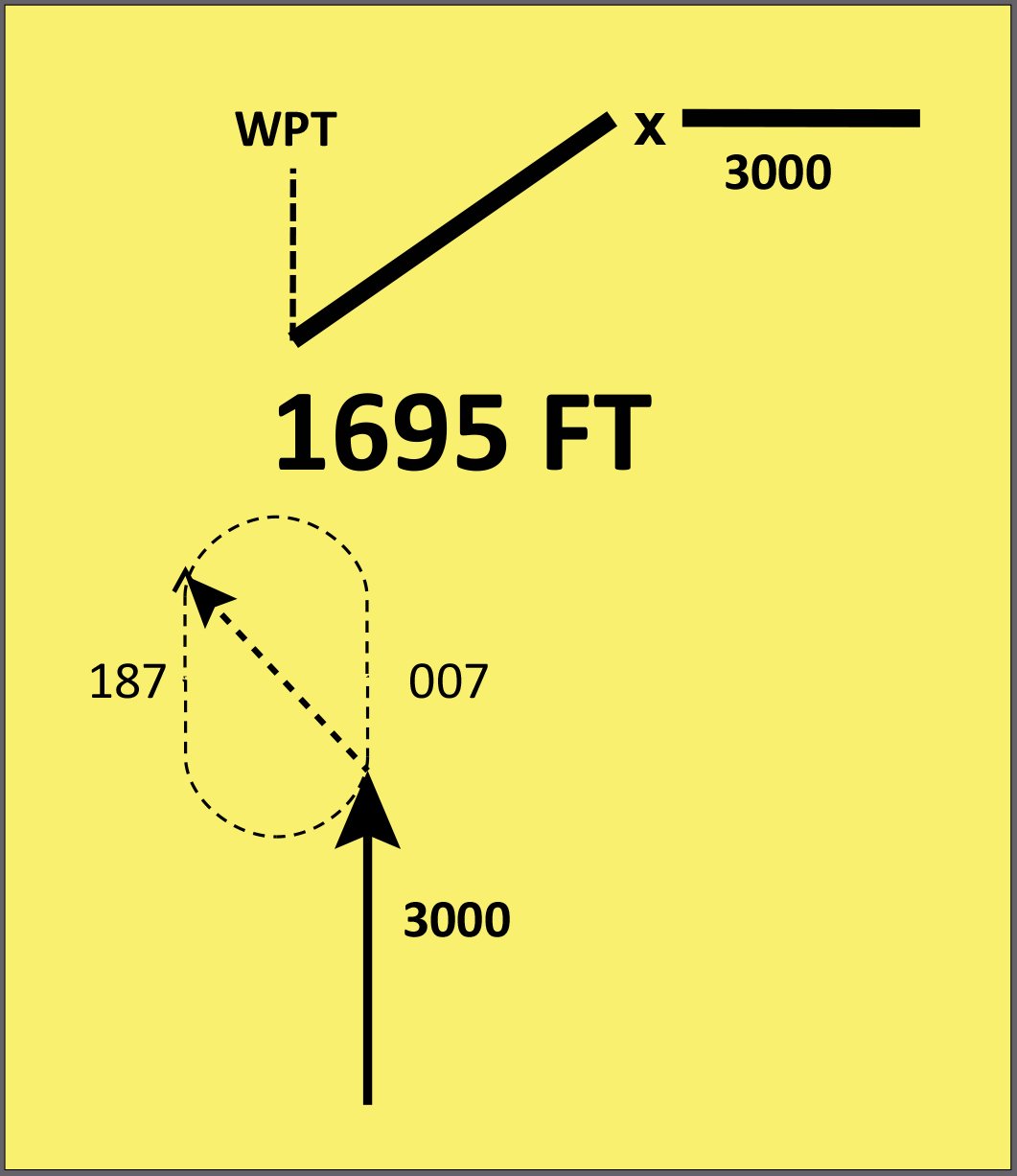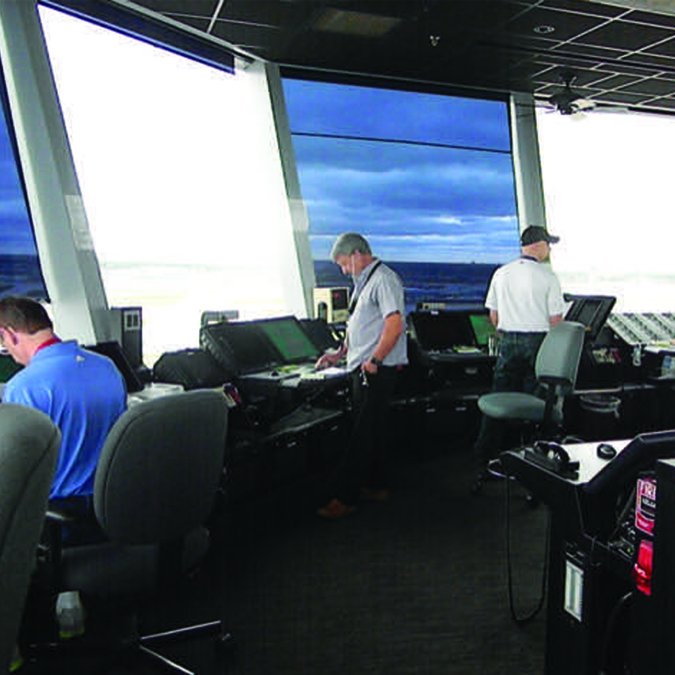Paul Sanchez
Whether we want to admit it or not, human flight by reference to instruments alone is an unnatural act. To determine up from down or left from right without a natural horizon, we need hours of training, and even more hours of regular practice. We also need a decently equipped airplane, stuffed with radios, colorful moving maps, some gyroscopes or their electronic equivalent, and more than a few charts, telling us where to go and how to get there.
Yes, flying IFR is complicated when we’re single-pilot in busy airspace, but it’s complicated even when we’re the only airplane on the frequency. So it’s no wonder pilots make mistakes when flying in the IFR system. The goal we all should be trying to achieve is to fly a perfect flight—always ahead of the airplane, never missing an ATC call, and ensuring the airplane is where it’s supposed to be at all times. With that in mind, let’s explore some areas where GA pilots typically need help—myself included.
1. Briefing Procedures
On one level, flying IFR today is to perform a series of published procedures. There’s often a departure specifying turns, headings, altitudes and fixes. If it’s a short trip between busy airports, the departure procedure can morph into an arrival, totally skipping the en route flight phase, the one when we can relax and slide the seat back a few inches. As we near our destination, there are more turns, headings, altitudes and fixes that are part of the approach procedure to our airport and runway of choice.
All these procedures are published on paper charts, on our tablets and in our panel-mounted avionics. To correctly and efficiently fly them, we have to interpret their hieroglyphics and translate it into a flight path conforming to our clearance and within the pilot’s and the airplane’s limitations.
Of course, we have the departure, arrival or approach loaded in our panel-mounted navigation equipment, with some facsimile of it readily available in the cockpit on paper or electronically for quick reference. We’ve also programmed our favorite EFB to match. But employing some kind of formal process to brief the procedure before we fly it minimizes confusion and the risk of busting a clearance.
Different pilots have different briefing methods. Some write down headings, altitudes and fixes on a sticky note and paste the results on the instrument panel, like the example at right. Others make notes on a kneeboard, or even a paper chart. Some just dial everything into the magic and follow the magenta line. Shooting an ILS back in the day saw us set up the inbound heading on the #1 Nav, with the radial for the miss on #2. Into the ADF’s frequency window we dialed the decision height.
The worst solution—one I’m guilty of—is attempting to memorize the procedure, even if there are only two or three items of concern. Trying to memorize the elements of even something relatively simple like an RNAV approach is a recipe for a lot of head-bobbing and wasted knob-twisting. Especially when single-pilot, that can lead to losing control, if only momentarily.
I’m as guilty as anyone else of not properly briefing a departure or approach (less so arrivals, since they’re rather infrequent on the routes and in the airplanes I’m flying lately). A lot of that revolves around the fact that almost 100 percent of my recent IFR flights have been single-pilot and briefing myself aloud self-consciously seems silly. Understanding the procedure’s basic headings and altitudes, and referring to the appropriate chart for details as they become necessary, is a bare minimum. We all can do better.
2. Poor Communications
Communicating with ATC should be a simple matter for instrument-rated pilots. The vast majority of the time, my communications are bog-standard, consisting mainly of facility handoffs as I pedal off toward my destination. While I’ve been doing this long enough to not have many problems with ATC, it can be painful to hear someone seemingly soak up all of a controller’s excess bandwidth asking for help with a clearance or circumnavigating weather.
To me, the biggest mistake GA pilots make with ATC is not listening. I’ve been guilty of missing a call or three from ATC over the years, but pilots out there seem to think they can check in on the frequency then check out. It’s sometimes embarrassing to hear ATC make repeated calls to someone who everyone on the frequency knows turned down the comm radio’s volume to talk with passengers. Those repeated calls not only waste the controller’s time but may also prevent someone else from getting a timely descent or a direct-to clearance. These days, activity levels seem to be up across the board, with GA, bizjets and airline traffic all competing for the same resources, whether they know it or not. In this environment, repeatedly missing a controller’s calls becomes something more than mere nuisance and starts to edge into a burden for everyone on the frequency
Here’s the tip: If you’re flying IFR in the daytime over the CONUS and you don’t hear ATC or another airplane every few seconds, something’s wrong. Turn down the Beach Boys playing on your iPad and turn up the radio. Ensure you’re on the correct frequency, the one you read back and wrote down at the last handoff. If you’re not sure what frequency to use, either go back to the one you were on (you wrote it down somewhere, right?) or look up the appropriate frequency on the chart, or approach plate.
Sometimes, communications issues aren’t your fault but can be caused by equipment failures, usually on your end. Feel free to ask for a handoff to the next controller if the one you’re working starts to sound weak. Carry a spare headset and a handheld microphone, and keep them within easy, one-handed reach.
3. Altitude busts

Climbing or descending to the wrong altitude not only risks an enforcement action but also can put you in conflict with other traffic, risking at least a loss of separation, or worse. If there is a loss of separation, and it’s because you weren’t where you were supposed to be, you can expect to be given a phone number to call when you land before being handed off to the next controller. That’s never a favorable outcome.
This shouldn’t be hard if everyone is using correct phraseology. The problems arise when the frequency is busy and everyone is speaking rapidly in an attempt to get on and get off for the next guy. Brush up on your phonetic alphabet (refresh your understanding of the difference between “fife” and “niner,” for example). Speak and expect to hear the full description of your new altitude. When it can be ambiguous, get redundant: “Center, November 12345, seven thousand, climbing one-one eleven thousand.” Write down new altitudes on a notepad or the autopilot’s altitude pre-select. Ideally, do it in both places. This shouldn’t be too hard, since you’ve just read back the new altitude.
Busting an assigned altitude takes on greater urgency when shooting an approach, which I’ll get to in a moment.
ATC Resources

As this magazine discussed earlier this year in articles about VFR flight following, there are a variety of free and detailed resources available from the FAA to help those pilots who might be having issues integrating communications with air traffic control into their IFR skillset. Additionally, commercial training providers often have a video or two with valuable information about ATC communications. At the end of the day, nothing beats getting out in the system and listening to how others do it. Before you know it, people will be listening to you.
Consider using these FAA resources to round out your communication skills.
Aeronautical Information Manual (AIM)
When it comes to IFR operations in the U.S., the AIM pretty much is the bible. It’s not only an excellent reference on what ATC expects, it includes detailed information on every aspect of U.S. flight operations. The current version always is available free for download. Be sure to familiarize yourself with Chapter 4: Air Traffic Control.
Air Traffic Control (ATC)

Like the AIM, ATC also is a bible, but for controllers. It provides them with the guidance and references they need on what to do, when to do it and how to do it. If you want to understand why ATC does things the way it does, this is your go-to resource. It’s also free for the download
Your Local ATC Facility
Many ATC facilities, especially control towers, may give limited tours upon request. Ask nicely; all they can do is say “no.” If/when you get a chance to chat with controllers serving your area, ask them what they recommend. Be sure to ask about formal events. Up until a few years ago, facilities regularly scheduled open house/seminar events known as “Operation Rain Check.” Those seem to have been discontinued, but each facility may hold their own, locally organized events with similar objectives. If all else fails, call them.
Other
Some of the best exposure you can get to ATC is to ride with someone who’s done this before and soak up their local knowledge and experience. Network with other pilots in need of a safety pilot for IFR currency and you’ll likely learn lots about ATC and your local airspace.
4. Avionics (MIS)Management
Flying IFR in today’s airspace, with today’s avionics, often has been likened to becoming an IT expert. While modern avionics are more capable than ever before, they’re also more complex, requiring significant training and experience before becoming at ease with the nuances and dead-ends they can present. If you don’t fly frequently, avionics skills can atrophy right along with your stick and rudder talents. Thankfully, there are more training tools available than ever before, including downloadable simulators, commercial online courses, YouTube videos and plain old dual instruction from a CFI-I who knows the boxes in your airplane.
Meanwhile, punching in direct to the next fix works while you set up a flight plan, as does asking for a vector. And despite the ticket in your pocket, most IFR flights end up executing a visual approach to a runway instead of a full, published procedure. But that doesn’t mean you can count on not knowing how to load and activate an approach or departure/arrival.
Some of this can be self-taught, without the need to spend money on anything other than a battery charger. Put the airplane’s battery on the charger, then sit down in the cockpit and power up what you need to learn. Use the owner’s manual/pilot guide and walk yourself through how to set up common procedures and flight plans. The only issues here are a) the airplane isn’t moving and b) you may not get the full flavor of how everything in the panel works and plays with everything else. Especially if your panel is a mix of old and new, you’ll likely need a double-I to make the best of it.
The extent to which you need avionics training depends on what’s in your panel and how you intend to use your instrument rating. Understanding error messages or why things work (or don’t) the way they do may be your biggest challenge. For that hurdle, get a professional who knows the systems in your airplane.
5. Ducking Under
Last but not least is the practice of ducking under—descending below minimum descent altitude (MDA) or decision altitude (DA)—to pop out the bottom of an uneven cloud deck and continue the approach when the runway environment isn’t in sight. Even though doing so is illegal, this was something of a thing when non-precision approaches typically were flown with a dive-and-drive descent instead of the constant-angle profile of today.
With the dive-and-drive profile of the day, the theory was that getting down early to the MDA on a non-precision approach and breaking out into VMC afforded greater opportunity to find the airport or runway and land on it. The dangers are rather obvious. Thankfully, industry-wide emphases on constant-angle descent and stabilized approaches has all but eliminated the desire to duck under—if not the infrequent need. If you’re tempted to descend below MDA/DA without the runway environment in sight, go around and either divert or take another whack at it. We draw the line at attempting a third approach in actual, though. If that happens, go somewhere else, land and wait out the weather forcing you to miss the approach.
When You’re In Over Your Head
Despite all our training, we can occasionally find ourselves overwhelmed, with too much to do and not enough time. In my experience, this usually happens when we let the airplane get ahead of us. Some solutions:
Slow Down
Reduce power and give yourself more time to deal with whatever’s wrong. Ask for some delaying vectors. Especially when flying an approach, you don’t want to be rushed into something you’re not ready for.
Go Around
If you’re on an approach and it’s not coming together, level off and fly to the missed approach point, then execute the miss. Once at a level altitude, and getting a vector for another try, re-group and re-brief the procedure to fix what’s wrong. Don’t try to salvage a bad situation.
Use Raw Data
The problem might be you’ve incorrectly programmed the avionics. Instead of blindly following the magenta line, revert back to flying a heading and altitude, and keeping the wings level.
The Compleat IFR Pilot?
Of course, there’s no such thing as an instrument-rated pilot who’s skilled and adept at all aspects of IFR flight. That’s why we train, why we study and why we keep learning new things. Pay attention to these five items and you’ll make fewer mistakes. It works for me.
Jeb Burnside is this magazine’s editor-in-chief. He’s an airline transport pilot and owns a Beechcraft Debonair, plus half of an Aeronca 7CCM Champ.




